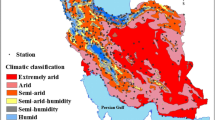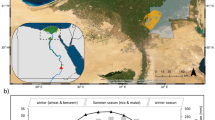Abstract
Wide assimilation of precision agriculture among farmers is currently dependent on the ability to demonstrate its efficiency at the field-scale. Yet, most experiments that compare variable-rate vs uniform application (VRA and UA) are performed in strips, concentrated in a small portion of the field with limited extrapolation to the field scale. A spatiotemporal normalized ratio (STNR) methodology is proposed to evaluate the impact of VRA compared with UA for on-farm trials at the field scale. It incorporates a base year in which the whole plot is managed with UA and consecutive years in which half of the plot is managed with UA and the other half is managed with VRA. Additionally, a novel normalized relative comparison index (NRCI) is presented where the ratios of VRA/UA sub-plots are compared between a base year and a consecutive year, for any measured parameter. The NRCI determines the impact of VRA on variability using statistical measures of dispersion (variability measures) and on performance with statistical measures of central tendency (performance measures). Variability measures with NRCI values lower or higher than 1 indicate VRA management decreased or increased variability. Performance measures with NRCI lower or higher than 1 indicate subplot impairment or improvement, respectively due to VRA management. The methodology was demonstrated on a commercial drip irrigated peach orchard and a wine grape vineyard. NRCI results showed that VRA drip irrigation reduced water status in-field variability but did not necessarily increase yield. The benefits and limitations of the proposed design are discussed.









Similar content being viewed by others
Abbreviations
- CWSI:
-
Crop water stress index
- MC:
-
Management cell
- NRCI:
-
Normalized relative comparison index
- PA:
-
Precision agriculture
- PAS:
-
Precision agriculture system
- PM:
-
Performance measure
- STNR:
-
Spatiotemporal normalized ratio
- SWP:
-
Stem water potential
- TSS:
-
Total soluble solids
- UA:
-
Uniform application
- VM:
-
Variability measure
- VRA:
-
Variable rate application
- VRDI:
-
Variable rate drip irrigation
- WP:
-
Water productivity
References
Aggelopoulou, K. D., Nanos, G. D., & Gemtos, T. A. (2010). Spatial and temporal variability of yield and fruit quality in apples. Acta Horticulturae, 877, 731–738.
Bellvert, J., Mata, M., Vallverdú, X., Paris, C., & Marsal, J. (2020). Optimizing precision irrigation of a vineyard to improve water use efficiency and profitability by using a decision-oriented vine water consumption model. Precision Agriculture. https://doi.org/10.1007/s11119-020-09718-2
Boyer, J. S. (1995) Chapter 3: Thermocouple Psychrometry Measuring the Water Status of Plants and Soil. Academic Press Inc., USA. 495: 49–102.
Castellarin, S. D., Matthews, M. A., Di Gaspero, G., & Gambetta, G. A. (2007). Water deficits accelerate ripening and induce changes in gene expression regulating flavonoid biosynthesis in grape berries. Planta, 227(1), 101–112. https://doi.org/10.1007/s00425-007-0598-8
Cohen, Y., Alchanatis, V., Saranga, Y., Rosenberg, O., & Sela, E. (2017). Map** water status based on aerial thermal imagery: Comparison of methodologies for upscaling from a single leaf to commercial fields. Precision Agriculture, 18, 801–822. https://doi.org/10.1007/s11119-016-9484-3
Colaço, A. F., & Molin, J. P. (2017). Variable rate fertilization in citrus: A long term study. Precision Agriculture, 18(2), 169–191. https://doi.org/10.1007/s11119-016-9454-9
Cordero, E., Longchamps, L., Khosla, R., & Sacco, D. (2019). Spatial management strategies for nitrogen in maize production based on soil and crop data. Science of the Total Environment, 697, 133854. https://doi.org/10.1016/j.scitotenv.2019.133854
Dag, A.; Alchanatis, V.; Zipori, I.; Sprinstin, M.; Cohen, A.; Maravi, T.; et al. (2015). Automated detection of malfunctions in drip-irrigation systems using thermal remote sensing in vineyards and olive orchards. In Proceedings of the 10th European Conference on Precision Agriculture, 12–23.
Dammer, K. H., Thöle, H., Volk, T., & Hau, B. (2009). Variable-rate fungicide spraying in real time by combining a plant cover sensor and a decision support system. Precision Agriculture, 10(5), 431–442. https://doi.org/10.1007/s11119-008-9088-7
Esau, T. J., Zaman, Q. U., Chang, Y. K., Schumann, A. W., Percival, D. C., & Farooque, A. A. (2014). Spot-application of fungicide for wild blueberry using an automated prototype variable rate sprayer. Precision Agriculture, 15(2), 147–161. https://doi.org/10.1007/s11119-013-9319-4
Idso, S. B., Jackson, R. D., Pinter, P. J., Reginato, R. J., & Hatfield, J. L. (1981). Normalizing the stress-degree-day parameter for environmental variability. Agricultural Meteorology, 24, 45–55.
Jackson, R. D., Idso, S. B., Reginato, R. J., & Pinter, P. J. (1981). Canopy temperature as a crop water stress indicator. In Water Resources Research, 17(4), 1133.
Jiang, H., Hu, H., Wang, S., Ying, Y., & Lin, T. (2020). Understanding the impact of sub-seasonal meteorological variability on corn yield in the US Corn Belt. Science of the Total Environment, 724, 138235. https://doi.org/10.1016/j.scitotenv.2020.138235
Jones, H., & Sirault, X. (2014). Scaling of thermal images at different spatial resolution: the mixed pixel problem. Agronomy, 4(3), 380–396. https://doi.org/10.3390/agronomy4030380
Kennedy, B. Y. J. (2002). Understanding grape berry development. Practical Winery and Vineyard, August, 1–5.
Kerry, R., Oliver, M. A., & Frogbrook, Z. L. (2010). Geostatistical applications for precision agriculture. Geostatistical Applications for Precision Agriculture. https://doi.org/10.1007/978-90-481-9133-8
Liakos, V., Smith, E., Fountas, S., Nanos, G., Kalfountzos, D., & Gemtos, T. (2020). On-Farm evaluation of variable rate fertilizer applications using yield-based mathematical formulae in a greek apple orchard. International Journal of Fruit Science, 20(sup2), 1–18. https://doi.org/10.1080/15538362.2019.1702135
Lowenberg-Deboer, J., & Erickson, B. (2019). Setting the record straight on precision agriculture adoption. Agronomy Journal, 111(4), 1552–1569. https://doi.org/10.2134/agronj2018.12.0779
Ma, B. L., Wu, T. Y., & Shang, J. (2014). On-farm comparison of variable rates of nitrogen with uniform application to maize on canopy reflectance, soil nitrate, and grain yield. Journal of Plant Nutrition and Soil Science, 177(2), 216–226. https://doi.org/10.1002/jpln.201200338
Meron, M., Tsipris, J., Orlov, V., Alchanatis, V., & Cohen, Y. (2010). Crop water stress map** for site-specific irrigation by thermal imagery and artificial reference surfaces. Precision Agriculture, 11(2), 148–162. https://doi.org/10.1007/s11119-009-9153-x
Minasny, B., & McBratney, A. B. (2006). A conditioned Latin hypercube method for sampling in the presence of ancillary information. Computers and Geosciences, 32(9), 1378–1388. https://doi.org/10.1016/j.cageo.2005.12.009
Munitz, S., Netzer, Y., & Schwartz, A. (2017). Sustained and regulated deficit irrigation of field-grown Merlot grapevines. Australian Journal of Grape and Wine Research, 23(1), 87–94. https://doi.org/10.1111/ajgw.12241
Munitz, S., Schwartz, A., & Netzer, Y. (2019). Water consumption, crop coefficient and leaf area relations of a Vitis vinifera cv. “Cabernet Sauvignon” vineyard. Agricultural Water Management, 219, 86–94. https://doi.org/10.1016/j.agwat.2019.03.051
Munitz, S., Schwartz, A., & Netzer, Y. (2020). Effect of timing of irrigation initiation on vegetative growth, physiology and yield parameters in Cabernet Sauvignon grapevines. Australian Journal of Grape and Wine Research, 26(3), 220–232. https://doi.org/10.1111/ajgw.12435
Naor, A. (2006). Irrigation scheduling of peach - Deficit irrigation at different phenological stages and water stress assessment. Acta Horticulturae, 713, 339–349.
Naor, A., Gal, Y., & Peres, M. (2006). The inherent variability of water stress indicators in apple, nectarine and pear orchards, and the validity of a leaf-selection procedure for water potential measurements. Irrigation Science, 24, 129–135. https://doi.org/10.1007/s00271-005-0016-6
Netzer, Y., Yao, C., Shenker, M., Bravdo, B. A., & Schwartz, A. (2009). Water use and the development of seasonal crop coefficients for Superior Seedless grapevines trained to an open-gable trellis system. Irrigation Science, 27(2), 109–120. https://doi.org/10.1007/s00271-008-0124-1
Netzer, Y., Munitz, S., Shtein, I., & Schwartz, A. (2019). Structural memory in grapevines: Early season water availability affects late season drought stress severity. European Journal of Agronomy, 105, 96–103. https://doi.org/10.1016/j.eja.2019.02.008
O’Shaughnessy, S. A., Evett, S. R., & Colaizzi, P. D. (2015). Dynamic prescription maps for site-specific variable rate irrigation of cotton. Agricultural Water Management, 159, 123–138. https://doi.org/10.1016/j.agwat.2015.06.001
Ohana-Levi, N., Derumigny, A., Peeters, A., Ben-Gal, A., Bahat, I., Katz, L., et al. (2021). A multifunctional matching algorithm for sample design in agricultural plots. Computers and Electronics in Agriculture, 187, 106262. https://doi.org/10.1016/j.compag.2021.106262
Robertson, M. J., Llewellyn, R. S., Mandel, R., Lawes, R., Bramley, R. G. V., Swift, L., et al. (2012). Adoption of variable rate fertiliser application in the Australian grains industry: Status, issues and prospects. Precision Agriculture, 13(2), 181–199. https://doi.org/10.1007/s11119-011-9236-3
Rud, R., Cohen, Y., Alchanatis, V., Levi, A., Brikman, R., Shenderey, C., et al. (2014). Crop water stress index derived from multi-year ground and aerial thermal images as an indicator of potato water status. Precision Agriculture, 15(3), 273–289. https://doi.org/10.1007/s11119-014-9351-z
Sadler, E. J., Evans, D. E., Gerwig, B. K., Millen, J. A., Thomas, W., & Fussell, P. (2005). Severity, extent and persistence of spatial yield variation in production fields in the SE US Coastal Plain. Precision Agriculture, 6(4), 379–398. https://doi.org/10.1007/s11119-005-2416-2
Sanchez, L. A., Sams, B., Alsina, M. M., Hinds, N., Klein, L. J., & Dokoozlian, N. (2017) Improving vineyard water use efficiency and yield with variable rate irrigation in California. In Proceedings of the 11th European Conference on Precision Agriculture., 8(2): 574–577. https://doi.org/10.1017/s2040470017000772
Stamatiadis, S., Schepers, J. S., Evangelou, E., Tsadilas, C., Glampedakis, A., Glampedakis, M., et al. (2018). Variable-rate nitrogen fertilization of winter wheat under high spatial resolution. Precision Agriculture, 19(3), 570–587. https://doi.org/10.1007/s11119-017-9540-7
Vellidis, G., Liakos, V., Porter, W., Tucker, M., & Liang, X. (2016). A Dynamic Variable Rate Irrigation Control System. In Proceedings of the 13th International Conference on Precision Agriculture, 13: 1–9.
Yang, C., Everitt, J. H., & Bradford, J. M. (2001). Comparison of uniform and variable rate nitrogen and phosphorus fertilizer application for grain sorghum. Transactions of the American Society of Agricultural Engineers, 44(2), 201–209. https://doi.org/10.13031/2013.4676
Yost, M. A., Kitchen, N. R., Sudduth, K. A., Sadler, E. J., Drummond, S. T., & Volkmann, M. R. (2017). Long-term impact of a precision agriculture system on grain crop production. Precision Agriculture, 18(5), 823–842. https://doi.org/10.1007/s11119-016-9490-5
Zaman, Q. U., Esau, T. J., Schumann, A. W., Percival, D. C., Chang, Y. K., Read, S. M., et al. (2011). Development of prototype automated variable rate sprayer for real-time spot-application of agrochemicals in wild blueberry fields. Computers and Electronics in Agriculture, 76(2), 175–182. https://doi.org/10.1016/j.compag.2011.01.014
Acknowledgements
The authors would like to thank the peach grower, Shlomo Cohen, for collaborating and allowing the research to be conducted in his orchard; Reshef Elmakais, Tomer Hagai, Shai Levi, Suliman Farhat, Omer Levi, Ishai Gilad, Ohad Masad, and Shlomi Kfir for field measurements and technical support; Datamap company for imagery acquisition and mosaicking. Additionally, the authors would like to thank the team of Carmel Wineries, Avi Yehuda and Dror Dotan for their collaboration and assistance at Mevo Beitar vineyard and particularly thank Ben Hazut, Matan Golomb and Doron Kleimann for assisting in the field measurements. The authors would also like to thank the anonymous reviewers of the manuscript for their constructive comments.
Funding
This research is a part of The “Eugene Kendel” Project for Development of Precision Drip Irrigation funded via the Ministry of Agriculture and Rural Development in Israel (Grant No. 20–12-0030). The project has also received funding from the European Union’s Horizon 2020 research and innovation programme under Project SHui, Grant Agreement No. 773903.
Author information
Authors and Affiliations
Corresponding author
Ethics declarations
Conflict of interest
The authors declare that they have no conflict of interest.
Ethical approval
This paper is an expansion of the ECPA 2021 conference proceedings full paper entitled “Methodology for comparison between uniform and variable rate application in a drip-irrigated peach orchard”.
Additional information
Publisher's Note
Springer Nature remains neutral with regard to jurisdictional claims in published maps and institutional affiliations.
Supplementary Information
Below is the link to the electronic supplementary material.
Rights and permissions
About this article
Cite this article
Katz, L., Ben-Gal, A., Litaor, M.I. et al. Spatiotemporal normalized ratio methodology to evaluate the impact of field-scale variable rate application. Precision Agric 23, 1125–1152 (2022). https://doi.org/10.1007/s11119-022-09877-4
Accepted:
Published:
Issue Date:
DOI: https://doi.org/10.1007/s11119-022-09877-4




